It is important to stay vigilant and act as soon as you see the early signs of lawn disease. If left unchecked, these diseases can spread and then turn your once pristine lawn into one that is struggling to stay green. In order to catch turf diseases in their early stages, you should be aware of what signs to look out for. In Michigan, there are four common lawn diseases that you should know about: dollar spot, red thread, necrotic ring spot, and snow mold. Keep reading to learn how to identify each of these diseases, so you know when to schedule curative treatments that can help restore your lawn to its pristine condition.
1. Dollar Spot
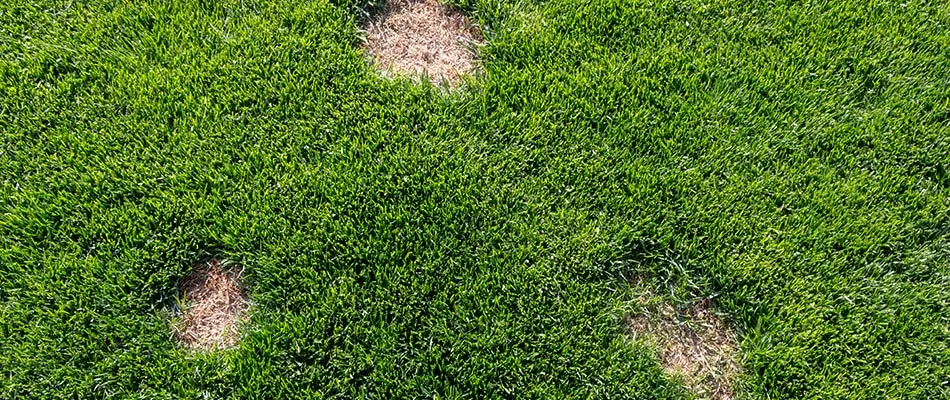
Dollar spot is one of the most common lawn diseases you’ll find in Michigan. This lawn disease can be identified by the round, bleached-out spots that sporadically appear throughout your lawn. These spots are typically quite small, usually around the size of a quarter or a silver dollar. They tend to develop in an environment where the weather fluctuates from warm, humid weather during the day to cool weather at night. This is because the temperature change produces heavy dew that the fungus uses to grow. Dollar spot will pop up between May and October, so start looking out for any signs around this time!
2. Red Thread
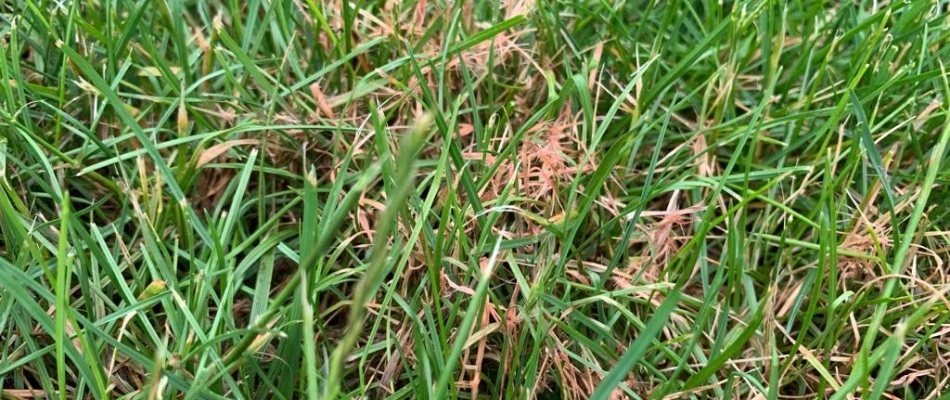
Red thread can be identified by the pinkish-red fungal strands protruding from your grass blades. When your turf is wet, the strands will appear gelatinous, but as they begin to dry, they will take on a threadlike appearance as they wrap around parts of your grass blades and spread. In the early stages of this disease, the symptoms will appear as small, blighted areas on leaves, and over time, they will enlarge and cover the rest of the grass blade. Red thread tends to favor humid or rainy climates in late spring and early summer, so make sure you’re looking for any symptoms during this time.
3. Necrotic Ring Spot
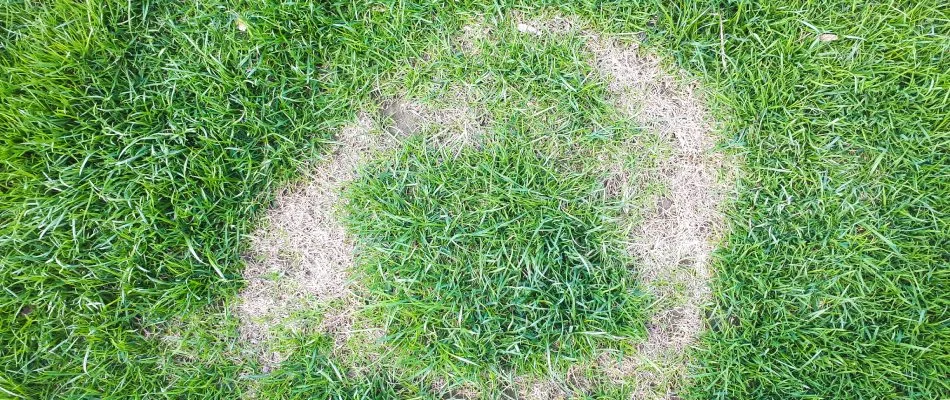
Necrotic ring spot first appears as small patches on your lawn and can range anywhere from 6 inches to 1 foot in diameter, and as it develops, the patches will eventually turn light yellow. Necrotic ring spot is distinguishable from the others on this list because there will be a ring of dead grass surrounding a patch of green grass. This disease is more active when the weather is cooler in spring and fall, however, it is still possible to see symptoms of this disease in summer.
4. Snow Mold
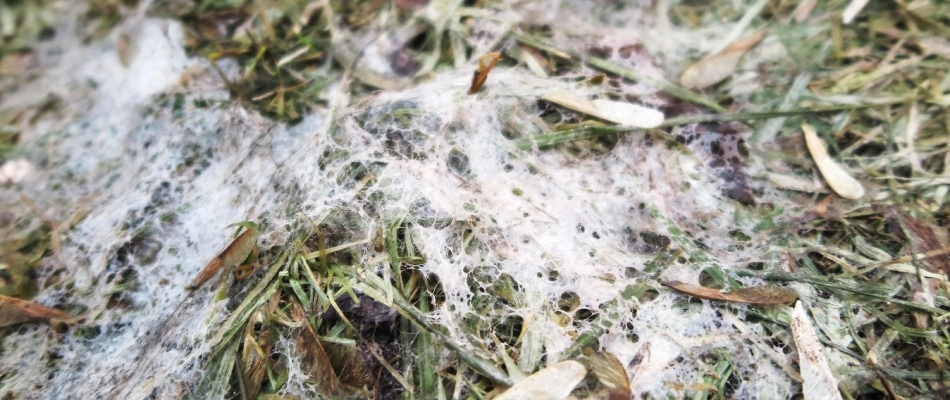
Snow mold is a fungal disease that is left behind after the snow melts in winter. There are two different types of this turf disease: pink and grey snow mold. They are nearly identical aside from their appearance. Pink snow mold will look like greyish-brown patches on your lawn, while pink snow mold will look like whitish-pink patches. These spots can range anywhere from around 3 inches to 24 inches in diameter. Snow mold is more prevalent during the colder months of the year when the snow has covered your ground for at least 3 months.
You can help prevent snow mold by cleaning up all debris from your lawn in the fall to make sure that your grass is not smothered throughout the winter.
Notice signs of lawn disease? Give us a call to schedule our lawn disease treatment service!
If you’ve noticed any signs of lawn disease, then it’s time to act before your entire lawn is infected. At Big Lakes Lawncare, we offer curative treatments that are designed to eliminate these common fungal diseases, and if you need any assistance nursing your lawn back to health, then we’ve got you covered with our lawn care services! We service commercial, HOA, and residential properties in the Macomb, MI area, which includes surrounding areas like Shelby and Chesterfield. Call us today at (586) 200-0855 to schedule our lawn disease treatment service!

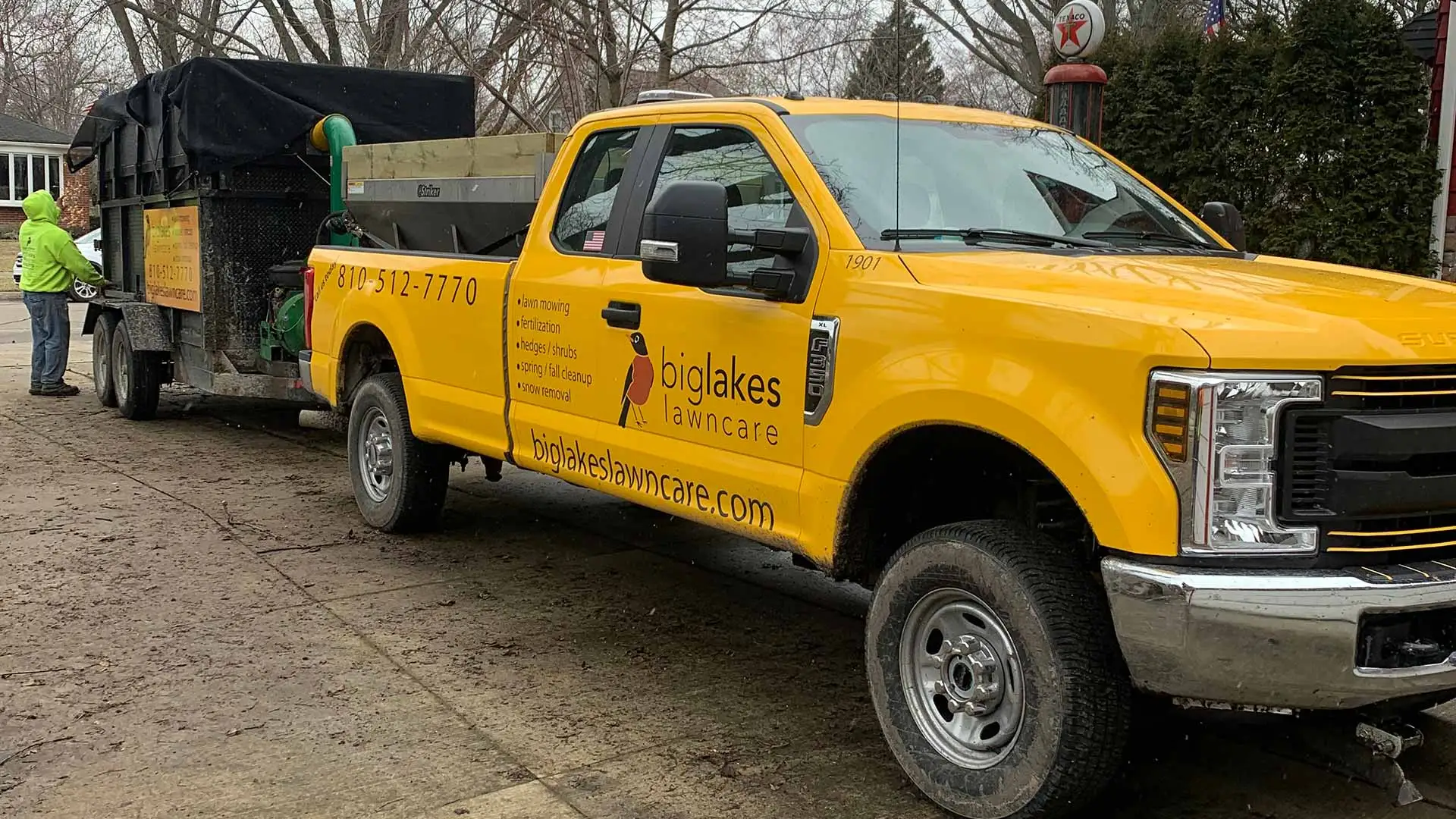
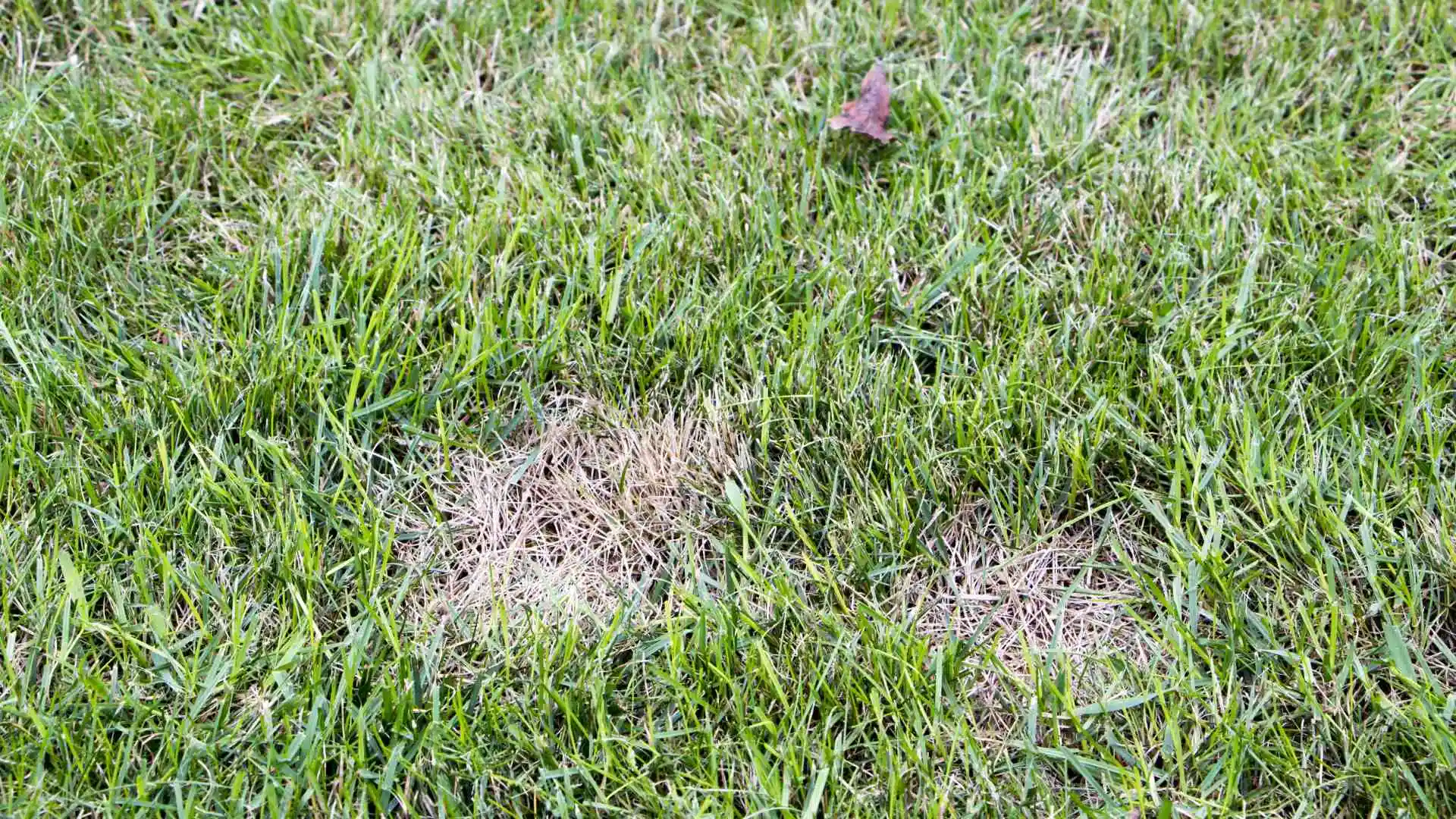

Comments (0)
Thanks for your comment!
Thanks for your feedback! Your comments have been successfully submitted! Please note, all comments require admin approval prior to display.
Error submitting comment!
There is a problem with your comment, please see below and try again.